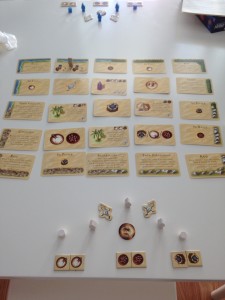I wrote about the Javier Baez callup today for Insider, and will chat at noon ET.
Spoon’s 2010 album Transference departed from the tightly-crafted, sparse rock of their previous albums, with abrupt transitions and less fluidity than Gimme Fiction or Ga Ga Ga & a few more Ga’s showed. Devout Spoon fans weren’t enamored of the change, but their newest album, They Want My Soul, should assuage their ire: It’s very Spoon, for mostly better and a little worse, with plenty of hooks and the same tight sound as their earlier works.

The best song is the opener, “Rent I Pay,” with Daniel’s staccato vocals over a throbbing guitar-and-drum line, along with one of those sharp silences that marked Spoon’s last album and another jarring curtain-drop ending. Starting the album with a hard indie-rock anthem may mislead you into expecting a return to the garage, but Spoon shifts directions multiple times, only returning to this style on a few tracks. Instead, we get the same sort of punctualism applied to different canvases, from the Roxy Music-inflected closer “New York Kiss” to the trancelike “Knock Knock Knock” (with a guitar riff sampled in to sound like a buzzsaw tearing through the sheet music). That track features the kind of layering and precise production I associate with alt-J’s An Awesome Wave, an album where every note and every sound effect seemed perfectly and deliberately placed; here Spoon use the technique to create a dark canopy over the paranoid lyrics.
Where Transference could feel deliberately weird, or at least overreaching, They Want My Soul is enjoyably quirky like Spoon’s previous work – indie-rock that doesn’t hew to any particular formula or obey any externally-imposed boundaries. “Let Me Be Mine” has Daniel repeating the lines “Auction off what you love/it will come back some time” over a shuffling off-beat rhythm with their typical sudden stops and restarts, a familiar execution of the Spoon formula that avoids sounding tired. (I could do without Daniel’s attempt at a Dick Van Dyke version of a cockney accent, though.) The aptly-named “Outlier” might be a Charlatans UK cover with its Madchester drums and keyboards, but then the steel acoustic guitar drops in to push the song even further into psychedelic territory. Even the cover of Ann-Marget’s “I Just Don’t Understand,” a dark waltz that stands out for its time signature and the match between the subject matter and Daniel’s raspy Kelly Jones-esque deilvery, manages to sound like a Spoon song even though it’s a cover of a track made famous by the Beatles.
“Do You,” the lead single, is a disappointing choice to push out to radio – it’s a good Spoon song, and I mean that in a good way, but it’s not a great one. It’s energetic and powered by the earnestness of Daniel’s voice, but not a track I walked away wanting to hear again and again. The lone dud on the album, “Inside Out,” might be the one track where Daniel et al try to break out of their genre, instead tossing out a failed trip-hop experiment that sounds cheaply produced and lacks any discernible hook.
I saw Divine Fits live in LA at the Fonda Theater, the last stop on their tour, and the one cover they mixed into the set was the Rolling Stones’ “Sway,” a slow, bluesy track allegedly written by Mick Taylor rather than Keith Richards. It’s a telling choice because it doesn’t sound much like the Stones, except when Mick Jagger’s voice comes in and you know it couldn’t be any other band. They Want My Soul carries that same aesthetic through its brief, fantastic 37-minute run – ten songs that sound little like each other, but all sound very much like Spoon.


